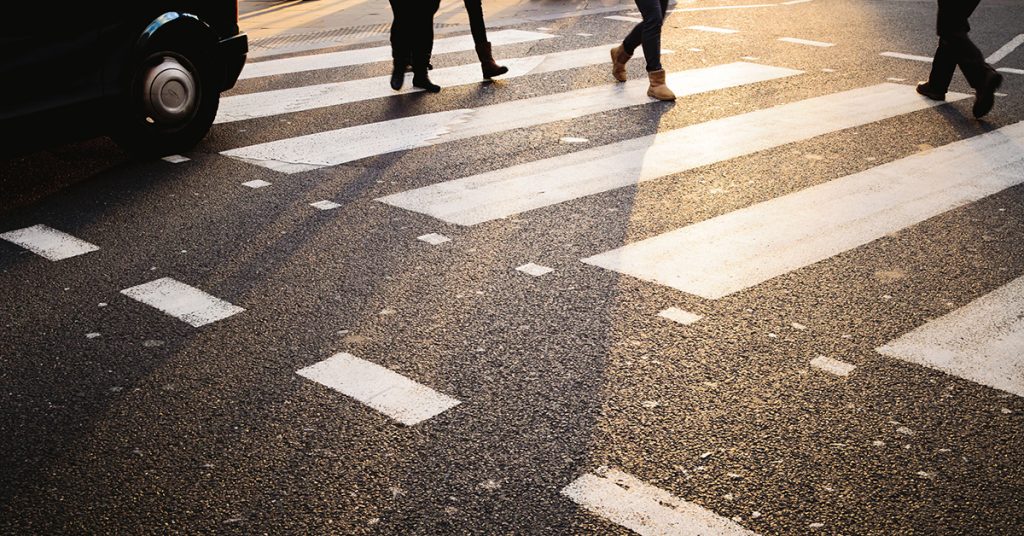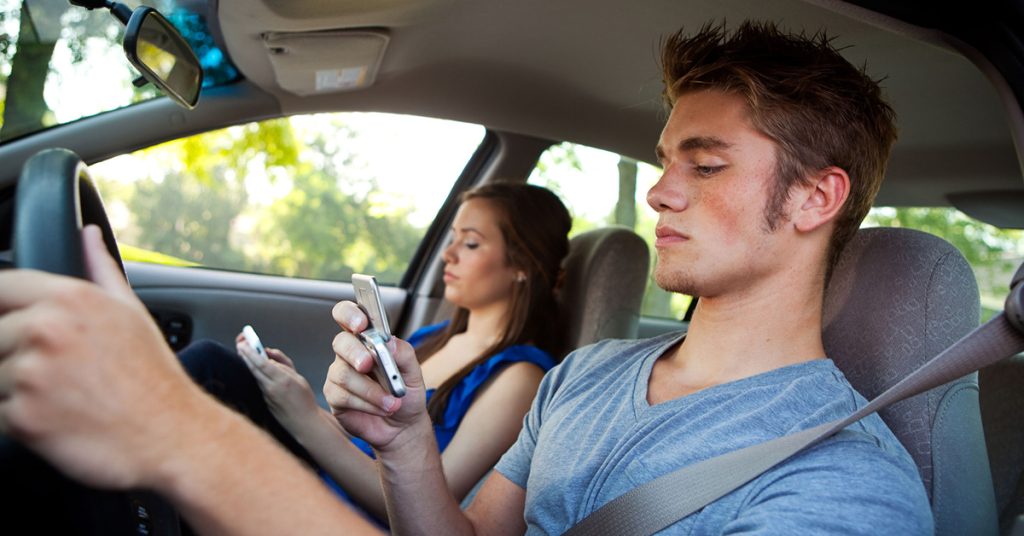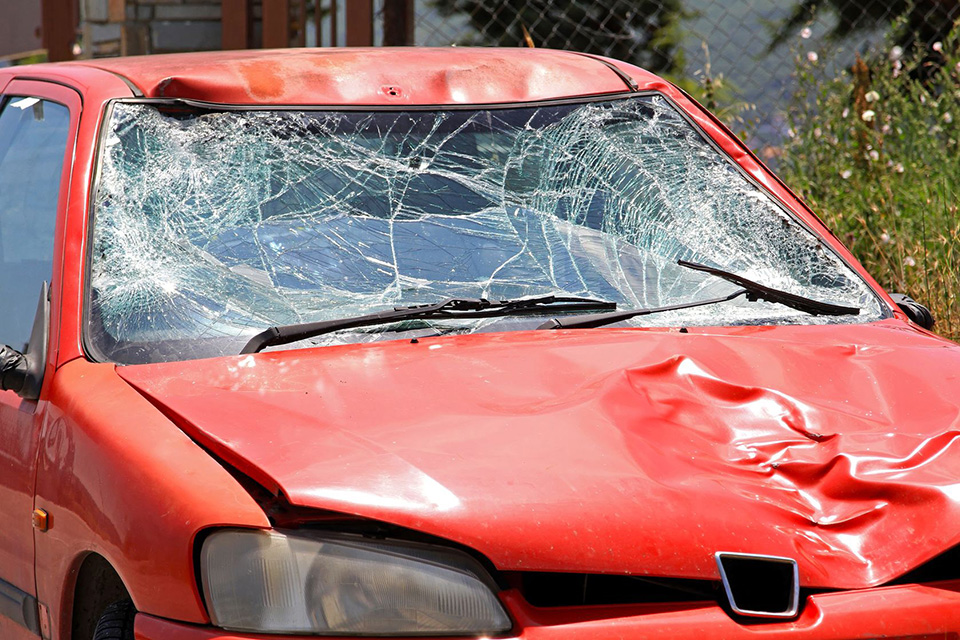Posts Tagged ‘“Boston car accident lawyers”’
National Teen Driver Safety Week is October 20-26, 2019
 National Teen Driver Safety Week will begin Sunday. While your teen may learn about this topic at school, parents can also become involved and learn alongside teens. Parents influence their children in many ways. If you can influence the discussion on safe driving, you could save a life.
National Teen Driver Safety Week will begin Sunday. While your teen may learn about this topic at school, parents can also become involved and learn alongside teens. Parents influence their children in many ways. If you can influence the discussion on safe driving, you could save a life.
It’s a well-known and tragic fact: motor vehicle crashes are the leading cause of death for teens. In 2017 alone, 2,526 teens were killed in crashes, according to the to the National Highway Traffic Safety Administration (NHTSA).
This is the 12th year that National Teen Driver Safety Week has been observed. Two Pennsylvania lawmakers, Congressman Charlie Dent (R-PA) and Senator Bob Casey (D-PA), introduced the legislation establishing the annual event in October 2007.
National Teen Driver Safety Week highlights many topics, including graduated licensing laws, distracted driving, speeding and obeying fundamental traffic laws. It also provides resources on helping teens through their first few weeks as a licensed driver, along with handling stressful and emotional driving situations, including car accidents. Visit teendriversource.org to learn more.
State Graduated Driver Licensing (GDL) Laws
We are going to write about graduating licensing laws because these are the foundation for teaching teens to drive safely. All 50 states have a law in place, but these vary in restrictions, according to the Insurance Institute for Highway Safety (IIHS). Florida was the first state to adopt a graduated licensing law for teens in 1996. Massachusetts lawmakers approved a Junior Operator Law in 2007, which increased driving training requirements and penalties.
The law places restrictions on teens with licenses between the ages of 16 ½ and 18. First, as you may know if you are a parent, teens have to obtain a learner’s permit. Next comes 30 hours of classroom training on Massachusetts motor vehicle laws and safe driving techniques. Beyond the classroom, there is another 18 hours of instruction, including 12 hours behind-the-wheel and 6 hours of observation.
Here are some of the restrictions under the Massachusetts Junior Operator Law:
Passenger Restriction. Teens are not allowed to drive with other passengers under age 18 until they have been licensed for 6 months. There is an exception for siblings.
Night Driving Restriction. Another restriction is teens cannot drive between the hours of 12:30 a.m. and 5 a.m.
Cell Phone Use Restriction. Teen drivers cannot use cell phones or mobile electronic devices. Texting while driving is also prohibited, for all other drivers in Massachusetts.
Teens can expect to receive a significant license suspension if they violate these restrictions. For instance, there is a 60-day license suspension if your teen is caught driving between 12:30 and 5 a.m. There is a 90-day suspension for a first offense of speeding. For the second offense, there is a full-year suspension.
Massachusetts’ Junior Operator Law violations
Visit teendriversource.org for more on National Teen Driver Safety Week.
Fewer Teen Drivers
In recent years, Massachusetts has actually reported a reduction in teen deaths and non-fatal injuries in drivers age 16 and 17. This is a positive development, except when you look closer. There has actually been an increase in hospital rates for crash injuries in drivers between 18 and 20 years old. The state and a Boston Globe analysis attribute this to the fact that many teens are now waiting to get their license until age 18. By doing so, teens can skip driver’s education, which became more expensive and time-consuming when the Junior Operator Law took effect.
If your teen delayed getting their license, make sure they take time to learn the fundamentals and get the practice they need. Driver’s education is a critical component to developing a safe driver.
About Breakstone, White & Gluck – Experienced Boston Car Accident Lawyers
The Boston personal injury lawyers at Breakstone, White & Gluck specialize in representing those injured in motor vehicle crashes in Massachusetts. With over 100 years combined experience, our car accident lawyers have the expertise to guide our clients to the best financial results in case involving motor vehicle accidents and truck crashes.
For a free legal consultation, contact us at 800-379-1244 or 617-723-7676. You can also use our contact form.
Massachusetts Parents: Reminders About Child Passenger Safety Seats

When properly used, child passenger safety seats can reduce the risk of fatal accidents by 71 percent for infants and by 54 for toddlers, according to the NHTSA.
Buying a car seat takes careful research. But most parents agree: the real hardship comes after you try to buckle your child up safely. While car seats are essential, they are anything but easy to use. And if you use them incorrectly, your child is left without proper protection.
All 50 states have laws requiring car seats for children. In Massachusetts, parents must secure their children in a federally-approved seat until they reach age 8 or over 57 inches tall. This is critical because car accidents are a leading cause of death for children ages 1 to 13, according to the National Highway Traffic Safety Administration (NHTSA). For every 32 seconds in 2017, a child under 13 was involved in a passenger vehicle crash.
We are writing about car seats because the NHTSA and other organizations recently observed Child Passenger Safety Week nationwide from Sept. 15 to Sept. 21. If you missed it, we are sharing a few resources and tips. If you are a parent, don’t lose hope. There are a lot of resources out there. The best place to start is with your local police department. Many police departments offer free car seat inspections year-round by appointment.
Selecting a Safe Car Seat
The NHTSA offers a free online resource to help parents select the right car seat. Parents should follow the manufacturer’s recommendations on age, weight and height recommendations for selecting car seats. NHTSA Find & Compare Car Seats
Types of Car Seats
Rear-facing seats. The NHTSA encourages children to use rear-facing seats up until age 3 or they reach the top of the manufacturer’s height and weight requirements. Always check your product manual for this information.
For the first 8 or 9 months, children should ride in rear-facing infant seats. The NHTSA then advises a move to a convertible or all-in-one seat, and that parents keep children rear-facing as long as they can.
As we said, it’s important to read your product manual and the manufacturer’s instructions. In past years, the recommendation was to keep your child in a rear-facing car seat until age 2. But new research has led to a new recommendation. In 2018, the American Academy of Pediatrics announced children can remain in rear-facing seats until they reach 40 pounds or more. While every child is different, this often comes after a child’s second birthday.
Forward-facing seats. Next, children will move into a harness and tether seat. This type of seat limits their forward movement if the car crashes. There are three types of forward-facing seats: convertible, combination and all-in-one.
Booster seats. These give children a boost so they can sit taller and safely use seat belts.
Without booster seats, seat belts can seriously injure children, causing abdominal bruising and injuries. Compared to seat belt use alone, booster seats are shown to reduce the risk for injury by 45 percent in children ages 4 to 8, according to the Centers for Disease Control and Prevention (CDC).
As with the other car seats, there are several types of booster seats: booster seats with high backs, backless booster seats, combination seats and all-in-on-seats.
In 2008, Gov. Deval Patrick signed the Massachusetts Child Passenger Safety Law, adding the booster seat requirement until children reach age 8 or 57 inches tall. At that point, children can move to regular seat belts in the back seat.
Making this transition earlier can leave your child without proper protection and vulnerable to injury. Unfortunately, parents are making this mistake. About 26 percent of children were moved to seat belts too early, according to the NHTSA.
Car Seat Registration and Expiration
Make sure to register your car seat with the manufacturer so the company can contact you if there is a recall. Car seats are frequently recalled and these can be widespread recalls, including mislabeling or defective parts. In 2014, Graco recalled 3.7 million car seats due to defective buckles, disrupting families across the country.
Remember, car seats have expiration dates. Look for the sticker at the bottom. The expiration date should be about six years from the manufacture date.
Never use a car seat beyond the expiration date. While the seat may appear to be in good condition, the plastic and other parts wear from daily use and exposure to sun, making the product less effective in protecting your child.
About Breakstone, White & Gluck – Boston Personal Injury Attorneys
Breakstone, White & Gluck has over 100 years combined experience representing those who have been injured and killed by the negligence and wrongdoing of others, including by car accidents. In 2013, we launched our Project KidSafe campaign to offer education and safety resources for children and families in Massachusetts. Learn more about Our Attorneys and our Project KidSafe campaign.
If you have been injured by someone else’s negligence, learn your legal rights from one of our attorneys. For a free legal consultation, call 800-379-1244 or 617-723-7676. You can also use our contact form.
NBC Boston Interviews Attorney David W. White About Hidden Dangers of Electric Scooters
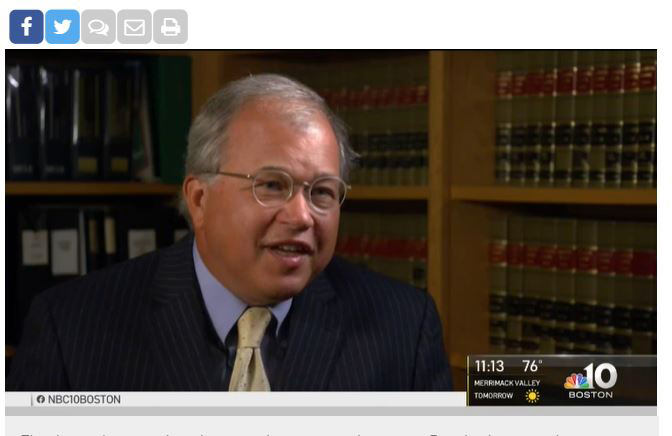
Attorney David W. White was interviewed by NBC Boston and said consumers are surrendering key rights when they enter into e-scooter agreements.
Electric scooters may look like an easy and convenient way to travel. But as they move into Massachusetts, there are definitely words of caution for riders.
Attorney David W. White was interviewed as part of NBC Boston’s coverage on e-scooters. He told NBC Boston’s Ally Donnelly that riders are often unaware of how vulnerable they are. If they are injured, they may look to their health insurance plan for coverage. But if they hit a pedestrian or cause property damage, they are on their own.
“You’re putting everything in the hands of the company and preserving essentially no rights for yourself whatsoever,” Attorney White said.
When riders accept a scooter company’s user agreement, they agree to resolve any issues through confidential arbitration with the e-scooter company and the maximum award is $100 – no matter what the situation. In most cases, when someone is seriously injured, they may require medical expenses as well as other damages, such as lost wages and pain and suffering.
But he said, “The most they will ever give you if they give you anything is $100.”
NBC Boston interviewed scooter riders in Brookline who admitted they hadn’t read the user agreement. While it appeared tiny on a cell phone, NBC Boston found one agreement actually printed out to 50 pages.
Attorney White said, “Our legislature is a decade behind this issue. Our insurance industry is a decade behind this issue. Everyone should care about this.”
The Boston City Council approved scooter regulations last March. Meanwhile, the Town of Brookline launched its e-scooter pilot program last April, bringing 200 scooters to the road. The program continues through mid-November.
In Massachusetts, Debate Continues on Ignition Interlock Devices for First-Time Drunk Drivers
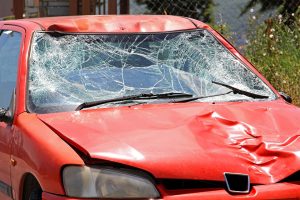
The Massachusetts Legislature is being asked to reconsider a ignition interlock law for first-time OUI offenders.
Many of us recall when Massachusetts passed Melanie’s Law to increase penalties for drunk drivers. This was a landmark bill aimed at preventing drunk driving injuries and deaths.
Yet today, when it comes to drunk driving laws, Massachusetts now falls behind some expectations. While ignition interlock devices are mandatory for repeat drunk drivers, they are not required for first-time offenders.
Each year, Mothers Against Drunk Driving (MADD) asks Massachusetts lawmakers to extend the requirement to first-time offenders. According to the advocacy organization, 119 people are killed each year in Massachusetts drunk driving crashes and that drunk driving fatalities account for 31 percent of all drunk driving deaths.
In January 2019, Gov. Charlie Baker and Lt. Karyn Polito included the measure in the administration’s road safety bill. According to the State House News Service, a hearing was held on the bill, but it remains to be seen if we will hear more this year. There was more than one bill filed this year, but no update since the summer.
Massachusetts Drunk Driving Laws
Massachusetts lawmakers passed Melanie’s Law in 2005 and this took effect in 2006. Named for the 13-year-old victim of a drunk driver, Melanie’s Law increased penalties for those charged with operating a motor vehicle under the influence of alcohol or controlled substances. It also increased jail time in drunk driving accidents resulting in serious injury and death.
Melanie’s Law was the state’s introduction to the ignition interlock device, a small unit designed to detect alcohol on one’s breath. The device is electronically connected to the vehicle’s ignition and won’t allow drivers to operate if they are intoxicated. Over the past 13 years, ignition interlock devices have been installed for more than 17,000 drivers, according to Mass.gov.
According to MADD, ignition interlock devices stopped drivers 31,845 times in Massachusetts between December 1, 2006 and December 1, 2016.
State by State: Ignition Interlock Laws
The national debate over ignition interlock devices dramatically changed in 2013. This is when the National Highway Traffic Safety Administration (NHTSA) released new model guidelines encouraging states to pass requirements mandating use of ignition interlock devices for first-time offenders. States were also urged to establish a minimum period of time for use.
According to the National Conference for State Legislatures, 28 states and the District of Columbia now have mandates for all offenders. These include New Hampshire, Vermont and Connecticut. The ignition interlock law is slightly different in Maine. Rather than mandating use, first-time offenders are eligible to get their license back earlier (after 30 days) if they keep the ignition interlock installed for the remainder of their sentence.
Like Massachusetts, Rhode Island requires use of ignition interlock devices for repeat offenders, though there are differences in the state laws.
Federal Law: Ignition Interlock
MADD isn’t the only organization pursuing ignition interlock devices. The Chicago Tribune reported a former NHTSA administrator was before Congress this summer, urging members to pass a law mandating automakers build vehicles with passive ignition interlock devices. According to the official, the technology has been available since 2006 and wider use could save up to 7,000 lives each year.
Breakstone, White & Gluck – Boston Car Accident Attorneys
At Breakstone, White & Gluck, our Boston car accident lawyers specialize in investigating all types of car accidents, including those caused by drunk drivers. With more than 100 years combined experience, Breakstone, White & Gluck has represented numerous drivers who have been struck by intoxicated drivers. In drunk driving claims, the injured person may be entitled to compensation from the at-fault driver’s auto insurance policy. Additional compensation may also be available through other sources, including restaurants, bars and other establishments.
Learn your legal rights. For a free legal consultation, contact us at 800-379-1244 or 617-723-7676 or use our contact form.
In Somerville, Second Hit-and-Run Pedestrian Crosswalk Crash Claims Life
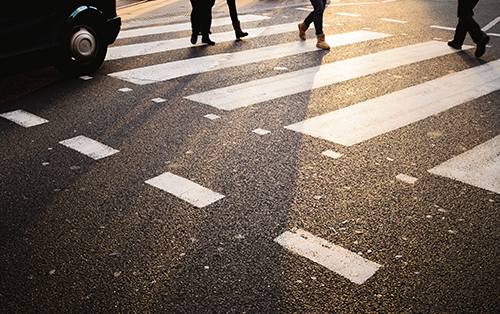
Somerville has seen at least two fatal pedestrian crosswalk crashes during 2019. The news media has reported both were hit-and-run crashes.
A driver was tragically killed in a Somerville crosswalk over the weekend. The victim was struck on Saturday night around 8 p.m. as she crossed along Mystic Avenue (Route 38), near McGrath Highway and Stop & Shop.
The victim, a Somerville resident, was transported from the scene and later pronounced dead at Massachusetts General Hospital (MGH). Meanwhile, Massachusetts State Police began investigating and searching for the driver, who had fled the scene. The 64-year-old Roxbury man turned himself in Sunday morning and was charged with leaving the scene of a crash causing personal injury or death and a crosswalk violation, according to WBZ Boston. He pleaded not guilty at arraignment today in Somerville District Court, where prosecutors revealed a few details about the crash. The driver admitted to drinking two glasses of wine at dinner before the crash and said he initially stopped because he suspected he had hit someone. He was allowed to remain free on $1,000 bail on the condition he refrain from alcohol. He is not allowed to drive.
According to StreetsBlog Mass, the crosswalk is located along Mystic Avenue. It provides pedestrians with access to the Kensington Underpass, which runs under I-93 and connects most of Somerville’s residential neighborhoods to businesses and offices in the Assembly Square district.
This is at least the second fatal pedestrian crosswalk accident in Somerville this year. Both were hit-and-run crashes. In February, a beloved 40-year-old educator was walking in a crosswalk at the Harden Road and Powderhouse Boulevard intersection. She was hit by a truck which never stopped and died from her injuries. Somerville Police had to launch a regional search. Days later, police found the 55-year-old Norwood driver, with help from a Tufts University police officer who spotted the truck parked on University Avenue in Medford. Still damaged, the truck was parked just a mile from the site of the pedestrian hit-and-run.
Tips for Driving Safely Near Pedestrians
Pedestrian accidents are often serious and life-threatening. You have probably heard this before, but drivers really can prevent most pedestrian injuries by slowing down and focusing on the road. Most people drive faster than they realize. According to AAA, when you adjust your speed from 25 mph to 35 mph, you double your risk for causing a fatal pedestrian accident.
Our safety tips for drivers:
- Travel the speed limit or lower when appropriate in neighborhoods and areas near stores and restaurants.
- Travel slowly through parking lots; never cut across parking lots or check cell phones.
- Always stop for pedestrians in a crosswalk.
- Take caution when driving at night.
- Older drivers should have regular vision exams and monitor their driving.
- Watch fatigue.
- Use GPS before you start driving.
- Do not use your cell phone for any reason. Even hands-free technology can be a distraction, especially during the summer months and for night driving.
- Never operate a motor vehicle while intoxicated or while under the influence of marijuana.
- Put down drinks and food.
- Talk to your family. If anyone is ever in an unimaginable situation and has hit a pedestrian or bicyclist, tell them to stop, call police and wait at the scene.
- Leaving the scene is against the law in Massachusetts. If the driver leaves the scene, the victim may not get the medical care they need to survive. Minutes and seconds matter.
Beyond preventing injury, it’s in your best interest to slow down if you don’t want a ticket. More than 40 Massachusetts communities have now established slower, 25 mph default speed limits. Massachusetts sets a 30 mph default speed limit for communities. But under state Municipal Modernization Law passed in 2016, individual cities and towns can opt into a 25 mph speed limit instead in thickly settled areas and business districts. They can also create 20 mph work safety zones. Communities cannot alter speed limits on state roads.
Next time you enter one of these communities, watch for the speed limit signs as you enter. Boston, Cambridge and Somerville are among the communities which have adopted the lower 25 mph speed limit. The City of Somerville implemented a 25 mph speed limit citywide as soon as the state law took effect back in 2016. It also pursued 20 mph limits in work safety zones.
Breakstone, White & Gluck – Free Legal Consultation
Breakstone, White & Gluck is known for our extensive experience handling personal injury cases and our superb results for those injured and their families throughout Massachusetts. We invite you to learn about our results after pedestrian crashes.
Our Boston personal injury attorneys specialize in representing those injured in pedestrian accidents involving crosswalks and other pedestrian car accidents. If you have been injured, it is critical to learn your legal rights for seeking compensation and learn about the process ahead. For a free legal consultation, contact Breakstone, White & Gluck at 800-379-1244 or 617-723-7676 or use our contact form.
Motorcyclists Face High Risks for Injury and Death in Truck Crashes
It was painful to learn of the New Hampshire truck crash which killed seven motorcyclists and injured three others last weekend. That one crash could injure so many is heart-breaking and we send our deepest condolences to the families.
The horrific accident happened Friday night in the community of Randolph, New Hampshire. The motorcyclists belonged to the Jarheads MC, a motorcycle club for Marine Corps veterans and close friends, according to The Boston Globe. The group was reportedly traveling to their annual meeting eastbound on Route 2 when they were struck by the truck traveling west. Reports said the truck crossed the double yellow line.
By Monday, the driver – a 23-year-old Springfield, Mass. man – had been charged with seven counts of negligent homicide in the case. Massachusetts State Police took Volodoymyr Zhukovskyy into custody at his home. He was then taken to Springfield District Court, where he waived extradition to New Hampshire.
New Hampshire authorities are still investigating the cause of the crash, but there are questions about whether Zhukovskyy should have been driving at all following his arrests on OUI charges last month and back in 2013, according to news reports. Meanwhile, his employer, Springfield-based Westport Transport is said to be cooperating with police.
While this type of collision causing so many injuries is rare, motorcycle crashes are not, especially during the summer in New England. Per mile, motorcyclists are 28 times more likely than passenger car occupants to die in a crash, according to the Insurance Information Institute. In fact, Massachusetts authorities report they have responded to four fatal motorcycle crashes between Saturday night and Monday morning.
Some of the crashes involved a single motorcyclist. This was the case in New Bedford, Belchertown and Andover. But in Westport, a preliminary investigation shows the motorcyclist was traveling westbound on Route 177 when there was a collision with a Ford Ranger turning onto Tickle Road. The driver of the Ford Ranger stayed on the scene and was said to be cooperating with police.
In addition to local authorities, motorcycle accidents should be investigated by an experienced motorcycle crash attorney. In some cases, another driver may not appear to be involved. But drivers who speed, stop short, pass a motorcycle illegally or fail to check their blindspot cause motorcyclists to crash all the time. These are known as no-contact crashes.
When trucks hit motorcyclists, injuries can be more severe as we saw in New Hampshire. Truck companies have a responsibility to train drivers how to operate near motorcyclists. Truck drivers must also take care to properly load vehicles, especially if they are carrying equipment and materials on open open trailers.
At Breakstone, White & Gluck, we urge drivers to observe the following:
- Motorcyclists have the right to operate on the same roads as drivers and must follow the same traffic laws and signals.
- Provide motorcyclists room. Travel several car lengths behind motorcyclists.
- Motorcyclists are permitted to ride two abreast in a lane in Massachusetts and New Hampshire. (Source: The Massachusetts Motorcycle Manual and AmericanMotorcyclist.com).
- Motorcyclist are not permitted to travel between traffic lanes (or split lanes).
- Accidents can happen when drivers fail to look before they turn. In fact, this was the cause of 44 percent of all motorcycle crashes in 2013, according to esurance.com.
- Attempt to make eye contact with motorcyclists at intersections. Many motorcyclists do not have self-canceling turn signals like car and you cannot trust a motorcyclist will turn until you see it.
- Check your mirrors and blindspots often.
- Some drivers have trouble driving in the rain. Expect the same from motorcyclists. Be patient and give them more room.
- Do not speed through traffic lights or make quick unexpected movements at traffic lights and intersections.
- Do not speed on any roads.
- Do not overload trucks and trailers. Secure equipment and materials behind a closed door or under secure ratchet straps, bungee tarp straps or other appropriate equipment.
- Do not attempt to pass motorcyclists unless you must. While you are allowed to do so in Massachusetts, the motorcyclist may not be expecting the move and surprises can lead to accidents and falls.
- Never drive when you are tired; do not drive when you are normally sleeping or getting ready for bed.
- Never drink and drive.
- Remove all distractions from your car, including cell phones. Hold heavy conversation and limit snacks and drinks.
Massachusetts Motorcycle Safety Tips
If you are a motorcyclist, please read our past blog, “Massachusetts Motorcycle Safety Tips.” The article can be a resource if you are just starting to ride, looking to become licensed or have questions about your Massachusetts auto insurance policy.
About Breakstone, White & Gluck
The Boston car accident lawyers at Breakstone, White & Gluck specialize in representing those injured in motorcycle accidents caused by the negligence of other drivers. If you or a loved one has been injured, learn your legal rights for seeking compensation. For a free legal consultation, contact us at 800-379-1244 or 617-723-7676 or use our contact form.
Study: Teen Crashes Cause Nearly 20 Percent More Deaths On Summer Days
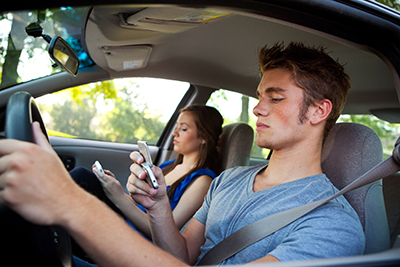
A recent study shows teen drivers are more likely to cause crashes resulting in injury or death during the summer months.
When your teen driver picks up the keys, you may casually say, “Have fun and be safe.” But this is when your worry sets in.
In this blog, Breakstone, White & Gluck reports on the latest research on teen drivers along with essential safety fundamentals to share with your family. Our partners each have more than 35 years of experience representing those who have been injured by negligent drivers in Boston, Cambridge and across Massachusetts. To avoid these tragedies, we encourage parents to play an even more proactive role to encourage safety during the summer months.
AAA Foundation for Traffic Safety “100 Deadliest Days” Study
A new study reports two-thirds of people injured or killed in car crashes involve a teen driver. The AAA Foundation for Traffic Safety released this figure as part of its “100 Deadliest Days” report on the period from Memorial Day to Labor Day. During the past five years, nearly 3,500 people have been killed in crashes caused by teens during the summer months, according to AAA.
More than a quarter of the teen driving crashes were caused by speeding. Teens who were drinking and driving caused 17 percent of the deadly collisions while distracted driving behaviors caused 9 percent of the deaths.
Other findings:
- Teen drivers, age 15-18, are 17 percent more likely to cause a fatal car crash in the summer than other times of the year.
- The legal age for consuming alcohol is 21 years old in every state. Yet 1 in 6 teens involved in fatal summer crashes tested positive for alcohol.
- More than 52 percent of teens participating in AAA’s research reported they had read a text message or email while driving in the past 30 days. Another 40 percent admitted to sending one.
- As part of its research, AAA used in-vehicle dash cameras and found 58 percent of teens who caused a crash were engaged in distracted behaviors. This was four times as high as federal estimates.
Other research goes deeper, showing teen drivers crash nearly 4 times as often per mile as drivers age 20 and up (Insurance Institute of Highway Safety.) The younger the driver, the more likely they are to crash due to inexperience or risky behaviors. Even a couple years can make a significant difference. For instance, the crash rate for 16-year-old drivers is 1.5 times as great as for 18- and 19-year-olds.
A few tips for your family:
Teen driving agreement. If you have never done so, now is a good time to have your child sign a teen driving agreement. Don’t just get a signature. Ask your teen to read each point out loud and ask if they understand or have any questions.
Massachusetts Junior Operator Law. Remind your teen that they have additional restrictions under the state’s junior operator law. If they violate the law, they may be cited and the infraction will go on their driving record. There is nothing you can do to help them at that point unless you plan to hire a criminal defense lawyer and attempt to challenge the citation.
For the first six months, drivers age 16 ½ to 18 cannot carry passengers under the age of 18, except for family members. The law also bans junior operators from driving between the hours of midnight and 5 a.m. and cell phone use is not allowed for any reason. There are additional consequences for driving under the influence of alcohol, speeding or drag racing.
Drinking and Driving. Explain to your teen that there is a zero tolerance policy for drinking and driving in your home. Encourage them to avoid parties where there are a large number of teens or where teens may be drinking.
At the same time, they should never get in the car with a friend who has been drinking and you will do everything you can to help them get home safely in situations involving alcohol. Come up with an emergency plan together now before there is a crisis situation.
Drive with your teen. Ask your teen to tag along when you go to the grocery store or mall. Show them how you handle the parking lot or the busy intersection where you need to watch for cyclists and pedestrians. Talk through some of the steps out loud. Then, give them the wheel on the way home.
Set a good example. Do not heavily consume alcohol and never drive if you do. Put your cell phone in the back seat when you drive. If your teen calls, say, “I was driving and couldn’t talk.” If you use a hands-free driving device, consider limiting use while your teen gets started on the road.
About Breakstone, White & Gluck
At Breakstone, White & Gluck, our Boston car accident lawyers have over 100 years combined experience. Our lawyers are committed to providing aggressive representation and obtaining the best possible financial results for clients – in every case. We represent clients injured by car crashes and in truck accidents in Boston, Cambridge, Somerville and across Massachusetts.
For a free legal consultation, contact us at 800-379-1244 or 617-723-7676 or use our contact form.
Massachusetts Tries Again at Passing Hands-Free Driving Law
Hands-free legislation has taken a step forward in Massachusetts this year. So have the studies and research showing the dangers cell phones bring to the roads.
 Eight years ago, Massachusetts banned texting while driving. Since that time, lawmakers have considered several proposals to ban drivers from using hand-held cell phones, with a goal of reducing distracted driving injuries and fatalities. On May 15, 2019, the Massachusetts House of Representatives overwhelmingly supported another proposal with a 155-2 vote. As many watch, the state Senate now plans to discuss the legislation in early June. Watch with caution though. The Senate has already approved hands-free driving bills during each of the last two sessions, according to the State House News Service.
Eight years ago, Massachusetts banned texting while driving. Since that time, lawmakers have considered several proposals to ban drivers from using hand-held cell phones, with a goal of reducing distracted driving injuries and fatalities. On May 15, 2019, the Massachusetts House of Representatives overwhelmingly supported another proposal with a 155-2 vote. As many watch, the state Senate now plans to discuss the legislation in early June. Watch with caution though. The Senate has already approved hands-free driving bills during each of the last two sessions, according to the State House News Service.
Under the House bill (H 3793), drivers would not be able to use hand-held cell phones. If they want to talk, drivers will have to use hands-free technology such as a Bluetooth device and keep their hands away from their phones. The primary exception is drivers can make a single tap or swipe to activate the device’s hands-free mode. There is another limited exception for public safety personnel and drivers in certain emergency situations.
What about GPS? Drivers can continue to use GPS devices which are mounted onto their vehicle’s dashboard, but these must not impede operation.
Fines for violations would start at $100 for first-time offenders. There would be a $250 fine for a second offense and a $500 fine for third and subsequent offenses. The bill would take effect 90 days after passage, but drivers will receive warnings instead of fines for violations up until Dec. 31, 2019.
In addition to approving hands-free legislation, the House bill would also require an annual review of the race and demographic information for drivers who are issued traffic citations. While Massachusetts already collects this data, lawmakers say there needs to be a consistent and regular review.
Distracted Driving Increases Near Emergency Responders
As we wait for legislators to vote, we want to share a few recent studies on distracted driving.
In April, the National Safety Council (NSC) released an alarming and upsetting report on a dangerous trend: drivers using cell phones near emergency responders.
All 50 states have “move over” laws which require drivers to clear the way and give emergency responders space to work. The Massachusetts “Move Over Law” took effect in 2009 and protects the work area for police officers, firefighters, paramedics, tow truck drivers and all roadside emergency and maintenance professionals.
Despite these laws, the NSC reports 71 percent of drivers surveyed said they take photos and video when they see an emergency vehicle on the side of the road. While passing by, they film fires, car crashes and even routine traffic stops.
Drivers are doing more than capturing the scene. Sixty percent are also posting footage to social media. Another 66 percent are providing someone with an update by e-mail.
There is a tragic cost to this cell phone use. About 16 percent of drivers surveyed said they have actually hit a first responder or were involved in a near-crash. And despite their actions, nearly 90 percent agree: their cell phone use puts emergency responders in harm’s way.
This problem doesn’t go away once the ambulance or police car drives away. On a normal day, when emergency responders are not on the scene, 24 percent of the drivers admit they still snap pictures and record video. Another 29 percent of drivers say they engage with social media and 24 percent say send e-mails.
AAA Foundation for Driver Safety Reports on Teen Driving, Cell Phone Use
Another study comes from the AAA Foundation for Traffic Safety and reports on the risk teen drivers bring to the roads, including when they use cell phones.
The study focused on drivers between the ages of 15 and 18, including those with learner’s permits, restricted licenses (often called junior operator licenses) and full licenses. The study reports teens are a vulnerable driving group because of their inexperience and they need education into the potential consequences of cell phone use, speeding and other reckless behavior. AAA released the study to raise awareness between Memorial Day and Labor Day, often known as the “100 Deadliest Days.”
The study reported that teen drivers killed nearly 3,500 people from 2013 to 2017. Cell phone use contributes to these car accidents. Some 52 percent of teens said they had read a text message or sent an e-mail while driving, according to the AAA study.
AAA noted police often struggle to determine if texting caused a car crash, but that the study’s researchers made use of in-vehicle dash cameras. With these tools, AAA found 58 percent of teen crashes were the result of distractions, including texting and reading text from a cell phone.
About Breakstone, White & Gluck
Breakstone, White & Gluck of Boston specializes in representing those who have been injured by the negligence and wrongdoing of others. With more than 100 years combined experience, our personal injury attorneys represent clients in matters involving catastrophic injuries, car accidents, bicycle accidents, medical malpractice, head injuries and wrongful death.
For a free legal consultation, contact us toll-free at 800-379-1244 or 617-723-7676. You can also use our contact form.
City of Boston Pursues 20 MPH Speed Limit to Reduce Traffic Fatalities and Pedestrian Injuries

In Boston, city officials are interested in lowering speed limits to 20 mph in neighborhoods to reduce traffic fatalities. The proposal comes just two years after the city lowered speeds from 30 to 25 mph and will require state approval.
First, the City of Boston dropped speed limits to 25 mph, with a goal of reducing traffic fatalities and pedestrian injuries. Now, Mayor Marty Walsh and the Boston City Council have their eyes on 20 mph on neighborhood streets. The next step is obtaining state approval.
The City of Boston first sought to lower speed limits as part of its VisionZero campaign a few years ago. That proposal also required approval from the state Legislature and Gov. Baker’s signature.
Gov. Baker signed the Municipal Modernization Bill into law in 2016, including language that allowed cities and towns to lower the default speed limit from 30 to 25 mph. Cities and towns can now lower speed limits on all (or select) municipal roads in thickly settled areas or business districts. Many communities have done so, including Boston, Cambridge, Quincy, Arlington and Dedham. Now, unless traffic signs are posted otherwise, it’s 25 mph in these communities.
While the speed limit in these communities has dropped, the fines remain the same. In Massachusetts, speeding carries a $105 fine for speeding. If you exceed the speed limit by 10 mph, there is an extra $10 fine per each mile per hour.
Boston was the first to approve lower speeds, with this taking effect in January 2017. But the City of Boston’s goal was always 20 mph and remains so for city neighborhoods. In fact, the Boston City Council approved a 20 mph speed limit back in 2016.
As the City of Boston pursues a 20 mph speed limit for neighborhoods, there is early data showing that the 30 to 25 mph drop has changed traffic patterns for the better. According to an Insurance Institute for Highway Safety study, after the lower speed limit took effect, Boston saw a 29 percent reduction in traffic traveling over 35 mph.
Mayor Walsh also announced other transportation initiatives last week, including the creation of special drop-off and pick-up sites for Uber, Lyft and other ridesharing vehicles. Data from the Massachusetts Department of Public Utilities confirms that Boston is the truly the hub of ride-hail services. During 2017, nearly 35 million rideshare trips began in the city. Boston saw more than 6 times as many rideshare starts as Cambridge, which has the second largest presences in Massachusetts.
Walsh’s other proposal is to give every student in the Boston public school system a MBTA pass. The price tag hasn’t been negotiated yet with the MBTA. Currently, the city receives a subsidy from the MBTA and pays $5.6 million for MBTA passes for students in Grade 7 and 8 who live more than a mile and a half from their schools.
Data That Supports 20 MPH
- According to the VisionZero Network, 9 out of 10 pedestrians who are hit by a vehicle traveling 20 mph survive. Increase the speed to 30 mph and the survival rate drops to 50 percent. At 40 mph, just 10 percent of pedestrians survive.
- Speed is a factor in nearly one-third of all traffic deaths in the U.S. (Source: VisionZero Network).
- Speeding crashes claimed the lives of 59,374 people on U.S. roads from 2010 to 2015 (Source: VisionZero Network).
- Cars speeding through red lights are a leading cause of urban car crashes, according to the Insurance Institute for Highway Safety. Some states and local communities permit use of red light and speeding cameras to improve enforcement. But many do not, including Massachusetts and our neighboring New England states. Rhode Island is the one exception, allowing red light cameras by state law and city ordinance. State law permits use of speeding cameras in school zones on weekdays.
Related:
Walsh to propose 20 mph limit in neighborhoods and new Uber, Lyft pickup sites, Boston Globe, March 7, 2019
Slow Down! Boston, Cambridge and Other Cities Have Dropped Speeds to 25 MPH, Massachusetts Injury Lawyer Blog, May 23, 2017
Ignition Interlock Devices for First-Time Drunk Drivers is Back Before the Massachusetts Legislature

The Massachusetts Legislature is being asked to reconsider an ignition interlock law for first-time OUI offenders.
A proposal to expand use of ignition interlock devices for drunk drivers is back before the Massachusetts Legislature.
Gov. Charlie Baker and Lt. Gov. Karyn Polito’s transportation bill includes the proposal to mandate ignition interlocks for first-time convicted drunk drivers. Currently, Massachusetts drivers convicted for the first time may seek hardship licenses allowing them to travel for work and specific purposes. Baker and Polito’s proposal would also put ignition interlock devices in their vehicles for at least six months following conviction. The devices test whether drivers are under the influence and if so, prevents them from starting their vehicle.
In Massachusetts, it is illegal to operate a motor vehicle with a blood alcohol concentration of .08 or higher, under M.G.L. c.90 § 24. The limit is .02 for drivers under 21. If police suspect drivers are intoxicated, they can be stopped and given a breathalyzer test. Drivers charged with operating under the influence can face a loss or suspension of their Massachusetts driver’s license and fines. Alcohol education training is a requirement in Massachusetts.
In addition, drivers can be sentenced to serve jail time, which is more common for subsequent offenses or when their actions cause death or serious injury.
As for drivers with more than one drunk driving offense, Massachusetts law does require them to use ignition interlock devices for a period of two years. M.G.L. c.90 § 241/2.
MADD and safety advocates say this is too little. And it falls short of the National Highway Traffic Safety Administration’s recommendation, which calls on states to require first-time offenders to use the devices and establish a minimum length of time for use. Twenty nine states have done so, according to the National Conference of State Legislatures.
Drunk driving continues to be a serious problem, killing almost 30 people daily across the U.S. (Source: NHTSA). Meanwhile, the state of Massachusetts reports about 150 people are being killed by drunk drivers each year. These drivers have a blood alcohol concentration of .01 and higher. Eighty percent of the deaths were caused by drivers operating with a blood alcohol concentration of .08 or higher.
Massachusetts Law: Drunk Drivers and Other Responsible Parties in Liquor Liability and Drunk Driving Injury Cases
In Massachusetts, when drunk driving leads to injury, a driver can be convicted of operating under the influence by the criminal courts.
Further, they can be held liable and have to pay monetary damages to the victim or multiple victims. Our Boston car crash attorneys have handled liquor liability cases for injury victims and their families for more than 25 years in Massachusetts. Our attorneys are experienced in investigating these crashes and identifying all the parties who may share responsibility. In addition to drunk drivers, commercial establishments such as bars and restaurants have a responsibility not to serve patrons who are already intoxicated. This area of law is known as dram shop liability.
Individuals also carry responsibility when minors consume alcohol at their homes under social host liability law. When someone provides alcohol to a minor – or their teenager does so – it’s a consequential offense in Massachusetts. A parent can be held liable and have to compensate the injured person or persons. Parents can also face criminal charges leading to fines and jail time.
About Breakstone, White & Gluck
Breakstone, White & Gluck is a Boston law firm specializing in representing individuals injured in car accidents, truck crashes and other collisions caused by negligent and reckless drivers. Our lawyers are experienced in representing drivers, pedestrians, cyclists and motorcyclists injured across Massachusetts, including in Boston, Cambridge, Somerville, Everett, Lynn, Newton and Waltham.
For a free legal consultation, contact our car accident lawyers at 800-379-1244 or 617-723-7676 or use our contact form.




